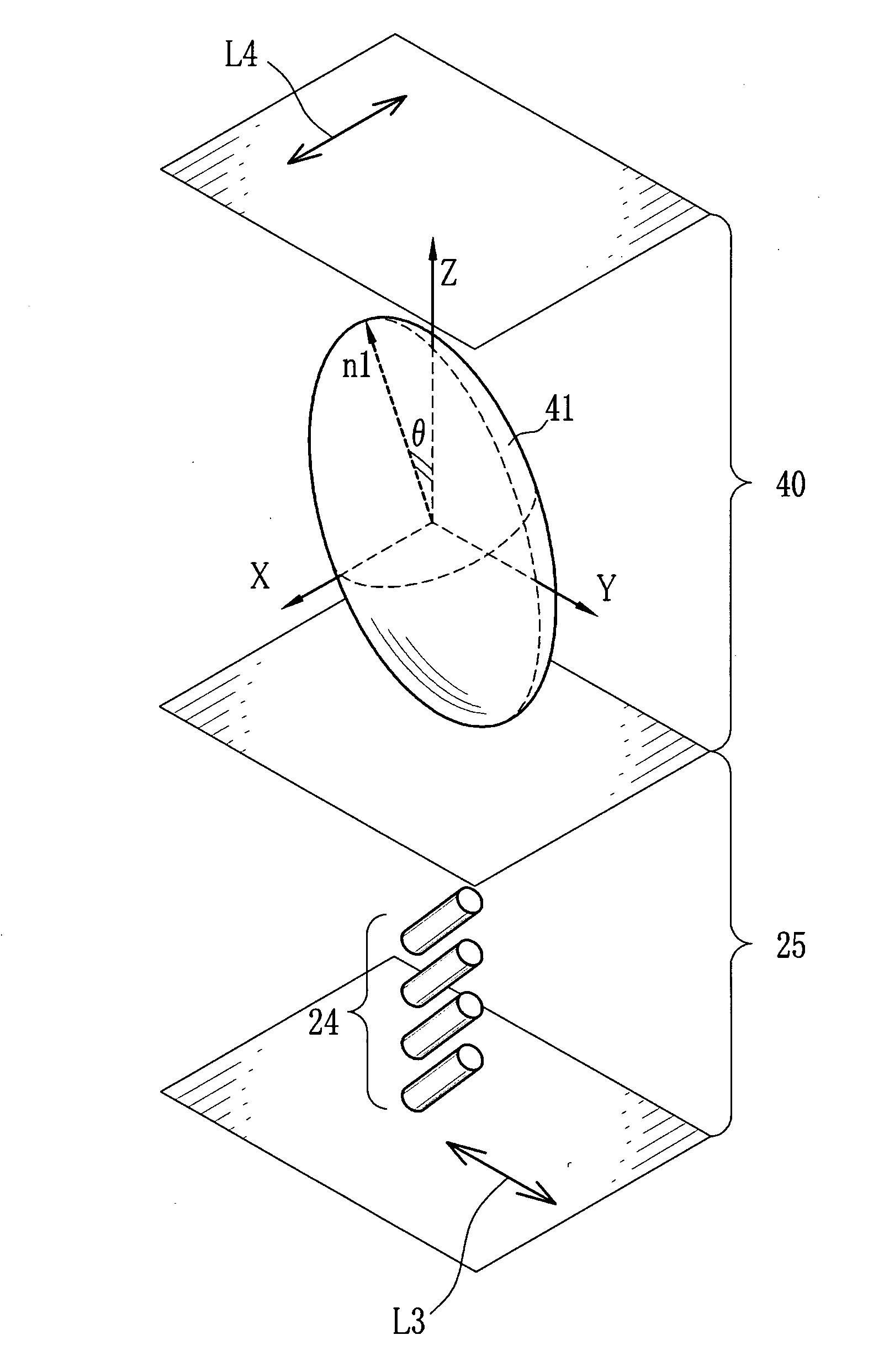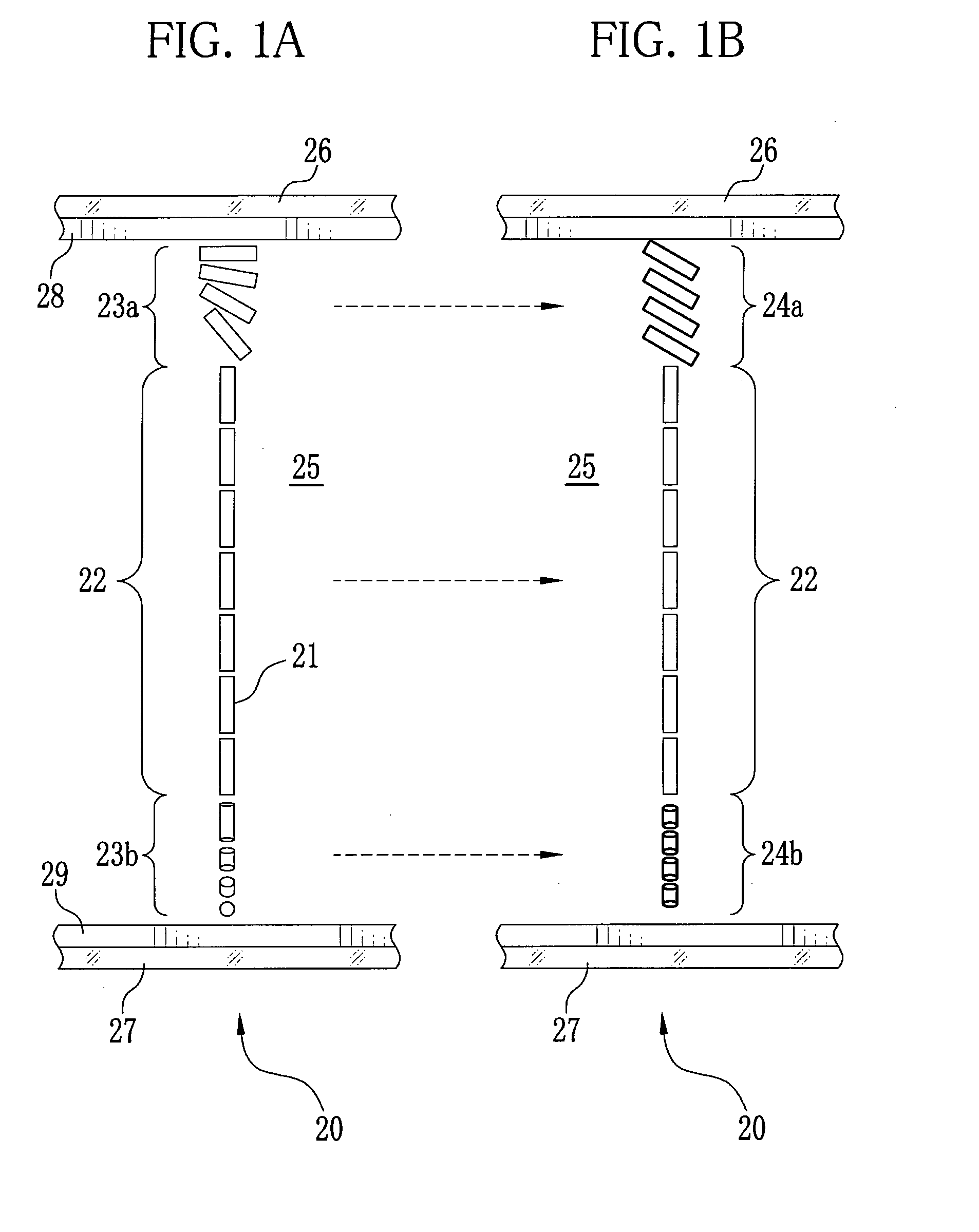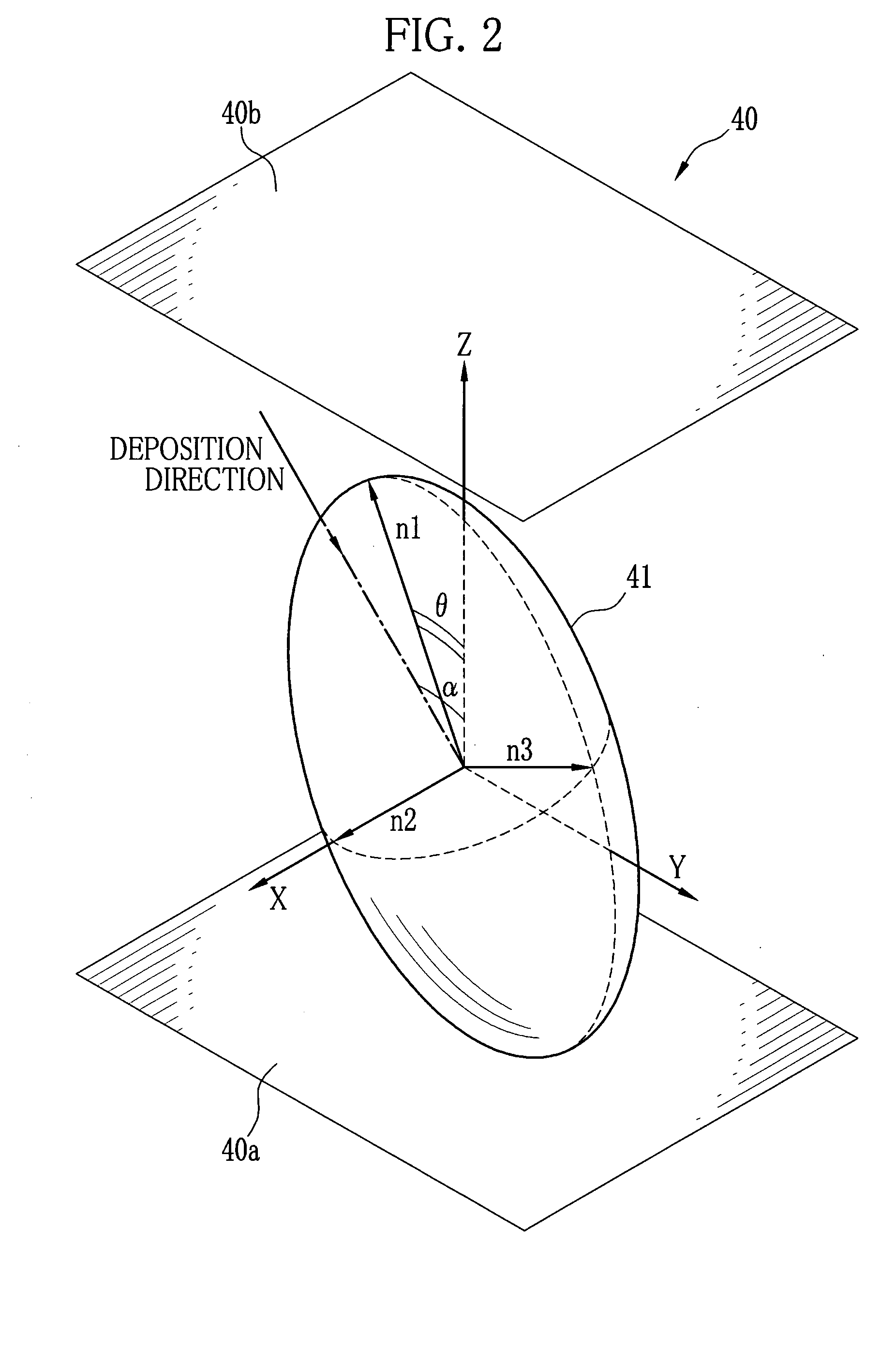Biaxial birefringent component, liquid crystal projector, and method for manufacturing biaxial birefringent component
a liquid crystal projector and component technology, applied in the direction of instruments, polarising elements, non-linear optics, etc., can solve the problems of light modulation, affecting the density of black display, and providing a relatively narrow field of view, so as to improve image contrast and low cost manufacturability
- Summary
- Abstract
- Description
- Claims
- Application Information
AI Technical Summary
Benefits of technology
Problems solved by technology
Method used
Image
Examples
example 1
[0069]Using the oscillating evaporator 60, a ZrO2—TiO2 composition was obliquely deposited onto a base plate of borosilicate glass, at a deposition speed of 0.2 nm per second, so as to form a biaxial birefringent component with a physical film thickness of 1.5 μm. A distance between an evaporation source and the base plate was 600 mm, and a polar angle α was 70°. The base plate was oscillated between a ±30° range at a speed of 10 cycles per minute. A cross section of the oblique deposition film thus obtained was observed with SEM, which found a regular microstructure tilted at 35° to a surface normal of the base plate. It was, however, not found a periodic microstructure corresponding to oscillation of the base plate.
[0070]This phase compensator having a biaxial birefringent component exhibited a frontal retardation of 65 nm to 550 nm light, with principal refractive indices n1 of 1.760, n2 of 1.730 and n3 of 1.640. The value T was 0.75. A tilt angle θ of an index ellipsoid to the s...
example 2
[0071]A phase compensator having a biaxial birefringent component on a base plate was obtained under the same conditions as Example 1, except that a physical film thickness was 2.0 μm. This phase compensator exhibited a frontal retardation of 10 nm to 550 nm light, with principal refractive indices n1 of 1.800, n2 of 1.782 and n3 of 1.743. The value T was 0.68. A tilt angle θ of an index ellipsoid to the surface normal of the base plate was 24°. Similar to Example 1, when viewed from the base plate, a slow axis of the frontal retardation of this phase compensator was perpendicular to an orthogonal projection of an evaporation source's rotation axis onto the base plate. This phase compensator was then combined with a liquid crystal projector having a VAN liquid crystal panel, and contrast of a projection image was improved from 800:1 to 1500:1.
example 3
[0072]Using the rotary evaporator 82, tantalum pentoxide was obliquely deposited onto a glass base plate, at a deposition speed of 0.2 nm per second, so as to form a biaxial birefringent component with a physical film thickness of 1.0 μm. A distance between an evaporation source and a rotary shaft of a base was 400 mm, and the base plate was placed 450 mm distant from the rotary shaft and held at 1000 mm high. The base was rotated at a speed of 10 cycles per minute, and during this rotation a polar angle α of a deposition direction was changing from 72° to 35°, and an azimuth angle β was changing between a ±23° range.
[0073]This phase compensator having a biaxial birefringent component exhibited a frontal retardation of 50 nm to 550 nm light, with principal refractive indices n1 of 1.800, n2 of 1.782 and n3 of 1.744. The value T was 0.68. A tilt angle θ of an index ellipsoid to the surface normal of the base plate was 24°. When viewed from the base plate, a slow axis of the frontal r...
PUM
| Property | Measurement | Unit |
|---|---|---|
| cone angle | aaaaa | aaaaa |
| tilt angle | aaaaa | aaaaa |
| tilt angle | aaaaa | aaaaa |
Abstract
Description
Claims
Application Information
 Login to View More
Login to View More - R&D
- Intellectual Property
- Life Sciences
- Materials
- Tech Scout
- Unparalleled Data Quality
- Higher Quality Content
- 60% Fewer Hallucinations
Browse by: Latest US Patents, China's latest patents, Technical Efficacy Thesaurus, Application Domain, Technology Topic, Popular Technical Reports.
© 2025 PatSnap. All rights reserved.Legal|Privacy policy|Modern Slavery Act Transparency Statement|Sitemap|About US| Contact US: help@patsnap.com



